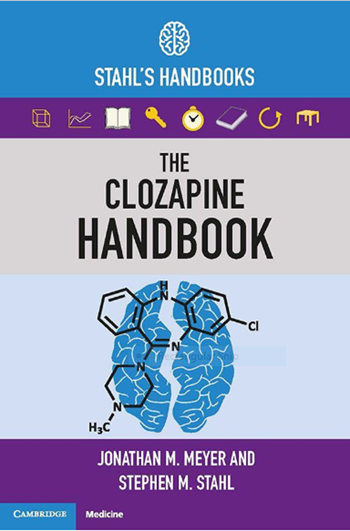
Clozapine is arguably the most effective antipsychotic for treatment-resistant schizophrenia. Other benefits include the reduced risk of suicide and all-cause mortality, when compared with other antipsychotics. Despite these benefits, most eligible patients are not offered clozapine or it is hastily discontinued. The most common reasons for not prescribing clozapine are a lack of confidence among prescribers and fears related to morbidity and mortality associated with adverse effects.
This book is authored by two eminent psychopharmacologists, who aim to bridge the gap between the evidence base for clozapine and clinical utilisation. It provides up-to-date, evidence-based recommendations in a simple way and all 15 chapters contain summary tables highlighting key points. We particularly liked the fact that the book covers almost all relevant aspects of clozapine therapy, including nine chapters devoted to the management of adverse effects, rare adverse effects, interactions with other medications and use in special populations.
The initial chapter discusses the superiority of clozapine over other antipsychotic drugs. Later chapters make a strong case for an individualised titration schedule and use of plasma clozapine level in deciding the target dose for each patient. It also covers cholinergic rebounds, which are commonly missed in clinical practice.
Regarding the management of adverse effects, the authors argue for the use of sublingual atropine and injected botulinum toxin for hypersalivation, routine use of laxatives for constipation and metformin to manage metabolic syndrome. The authors advise not prescribing anti-epileptic drugs for prevention, unless a patient suffers a seizure.
We suggest that flow charts summarising the recommendations for busy clinicians would have been a useful addition to the book. Overall, however, the book is a succinct, up-to-date encyclopaedia on clozapine that is easily accessible to readers. Hence, we are pleased to recommend it to all clinicians, including psychiatrists, nurses and pharmacists involved with patients on clozapine therapy.




eLetters
No eLetters have been published for this article.